Collectible figurines, in all their forms, hold a unique place in the hearts of collectors, but few possess the delicate, enduring charm of the glass rose figurine. More than just an ornament, the glass rose is a timeless testament to love, passion, and the eternal nature of art. Its fragile beauty, capturing a flower in its peak moment of bloom and preserving it indefinitely, has made it a treasured keepsake across the United States for generations.
This guide serves as the ultimate US-focused resource for collecting, valuing, and preserving these exquisite art glass creations. We will delve into the rich history of glass floral art, break down the different manufacturing techniques, explore the modern US market (with pricing in USD), and provide essential tips for maintaining your collection’s sparkle for decades to come. Whether you’re a seasoned collector hunting for a rare vintage find or a beginner looking to purchase your first handblown glass rose as a meaningful gift, this article will equip you with the knowledge needed to appreciate and navigate the captivating world of glass rose figurines.
I. A History Forged in Fire: The Origins of Glass Floral Art
The art of manipulating glass into intricate forms is centuries old, but the specific craft of creating detailed floral arrangements and figures truly flourished with the refinement of particular glassworking techniques. Understanding this history, especially its connection to the United States, is crucial for any serious collector of collectible glass rose figurines.
The Venetian Foundation and Spun Glass Techniques
The story begins centuries ago on the island of Murano, Venice, where master artisans developed the lampworking (or flameworking) technique. This involved using a high-heat flame to melt and shape slender rods of glass. This technique is the foundation for the classic, highly delicate spun glass roses that many collectors associate with the vintage market.
In the 18th and 19th centuries, spun glass became popular across Europe. Artisans would spin molten glass into fine threads, creating the incredibly thin, almost translucent petals characteristic of these miniature floral sculptures. While many are stamped or sold as “Murano style,” a significant number of these delicate figures were imported into the US or produced by immigrant artisans who brought the Italian craft to American shores.
The American Pinnacle: The Blaschka Glass Flowers
Perhaps the most significant chapter in American glass botany—and the ultimate influence on the US public’s appreciation for hyper-realistic glass flowers—is the Ware Collection of Blaschka Glass Models of Plants at the Harvard Museum of Natural History. Created between 1886 and 1936 by father and son Leopold and Rudolf Blaschka, this collection of over 4,300 models was commissioned to serve as teaching tools for botany students.
The Blaschkas, Czech glass artists, worked full-time on the collection for nearly fifty years. Their meticulous detail and anatomical accuracy elevated glassmaking from a craft to a true art form in the US eye. Though not roses specifically for mass commercial collecting, the Blaschka collection set a virtually unattainable standard for realism in glass flora, fueling the popular imagination and creating a long-standing appreciation for glass botanical sculptures among Americans.
The Post-War Studio Glass Movement
The mid-20th century marked another American innovation that fundamentally changed the landscape for art glass flower sculpture: the Studio Glass Movement. Originating in the US in the 1950s and 60s, this movement democratized glass art, moving it out of large industrial factories and into smaller, independent artists’ studios.
This shift gave rise to contemporary artists who focused on unique, one-of-a-kind, or small-batch production pieces. These modern handblown glass rose pieces are often heavier, more sculptural, and signed by the artist. Collectors seeking investment-grade or fine art pieces often focus on artists who emerged from this US movement, which emphasized creative expression over mass production.
II. Anatomy of a Glass Rose: Types and Techniques
Not all glass rose figurines are created equal. They differ vastly in technique, material, weight, and fragility. A knowledgeable US collector must be able to distinguish between the common types to properly assess value and rarity.
1. Spun Glass (Lampwork) Roses
- Characteristics: Extremely fragile, lightweight, typically small, featuring thin, wispy petals and leaves. They often have a fine, thread-like stem and are sometimes attached to a small glass base or mirror.
- Technique: Made entirely at a torch (lampworking/flameworking), where glass rods are melted and pulled into fine strands. The petals are shaped by manipulating these molten threads.
- Collector’s Note: These are the most common vintage glass rose figurines found at antique markets in the US. They are often unmarked. Value is determined by condition (no broken or chipped petals/leaves) and color complexity. Due to their ubiquity and fragility, they are generally on the lower end of the vintage glass rose value scale (typically $10–$40 USD).
2. Handblown Art Glass Sculptures
- Characteristics: Solid, heavier, and more substantial. These roses are made from molten glass gathered on a rod (punty) and shaped using tools and air pressure. They showcase the artist’s individual style.
- Technique: Free-form glass blowing. The rose petals are often thick and layered, giving the flower a realistic, three-dimensional weight and texture.
- Collector’s Note: This category includes works from contemporary US glass artists and major US studios like Glass Baron. These pieces are valued for their artistry, color saturation, and, critically, the artist’s signature or studio mark. Prices for a high-quality handblown glass rose from a known US artist can range from $75 USD up to $500+ USD for rare, large, or limited-edition pieces.
3. Crystal Rose Figurines
- Characteristics: These figures are usually heavier and exceptionally clear due to the lead oxide content (genuine crystal). They refract light brilliantly.
- Technique: Can be molded (pressed glass) for uniformity or hand-cut (like fine stemware) to enhance facets and sparkle. The finest examples are often hand-cut or acid-etched.
- Collector’s Note: Many crystal rose flower pieces are made by international brands like Baccarat or Waterford, but they are highly popular in the US. The Arribas Brothers, known for their work with Disney, also create highly sought-after crystal pieces, like the “Enchanted Rose” domes. Retail pricing in the US typically starts around $50 USD for small pieces and can climb into the hundreds for large, branded, or cut-crystal sculptures.
4. The “Enchanted Rose” Domes
- Characteristics: A rose figure (often glass or preserved) encased under a glass dome (a cloche), popularized by the Disney movie Beauty and the Beast. This style has become an incredibly popular gift and home décor item in the US over the last decade.
- Collector’s Note: While not always collectible in the traditional antique sense, the Disney-licensed versions (e.g., Arribas Brothers) are highly collectible. The mass-market LED versions are plentiful but hold little collector value. They are, however, a modern interpretation of the glass rose that drives current market demand.
III. The US Market: Brands, Value, and Investment
The US market for glass rose figurines is vibrant, driven by both contemporary artists and the hunt for affordable vintage treasures. Understanding who made the piece and its current retail value in USD is paramount to collecting intelligently.
Prominent US Manufacturers & Artists
While hundreds of small-scale glass artists produce roses, a few key US-based or widely distributed brands dominate the collectible and gift market:
Glass Baron
- Focus: Affordable, high-quality, handcrafted art glass, often accenting pieces with real 22Kt gold. They specialize in glass miniatures and floral pieces.
- Key Piece: The “Forever Red Rose” figurine, often mounted on a mirrored base and embossed with a romantic inscription.
- Value Range (USD): New pieces typically retail between $25 USD and $60 USD online and in US gift shops, making them an excellent entry point for new collectors. Their brand name is a major SEO keyword: Glass Baron rose price.
Arribas Brothers (Disney)
- Focus: World-renowned crystal artisans who create intricate, high-end pieces, notably those licensed by Disney.
- Key Piece: The “Beauty and the Beast Enchanted Rose” sculpture, a fully sculptured glass rose under a dome.
- Value Range (USD): These pieces can be quite expensive, ranging from $150 USD to over $500 USD depending on the size and complexity, holding their value well due to the Disney association and the Arribas reputation.
Studio Artists
- The true investment pieces often come from independent US studios. Look for names from the Pacific Northwest (Pilchuck Glass School graduates) or regional glass hubs. These artists focus on the art glass flower sculpture as a fine art object.
- Identification: Always check the base for an engraved signature, date, or studio mark.
Current Market Value (USD)
Valuing a collectible glass rose figurine depends on a few key factors:
| Category | Typical Value Range (USD) | Key Value Drivers |
| Common Spun Glass Roses | $10 – $40 | Pristine condition, complex color pattern (e.g., two-tone petals), original tag/box. |
| Vintage Murano-Style | $40 – $75 | Verified Murano origin (rarely marked), size, excellent color saturation. |
| Mass-Market Blown Glass | $25 – $60 | Brand recognition (Glass Baron), 22Kt gold accents, original packaging. |
| Signed US Studio Art Glass | $75 – $500+ | Artist reputation, size, weight, complexity of the bloom, unique coloring/technique. |
| Collectible Crystal/Disney | $100 – $500 | Brand (Arribas Brothers, Waterford), official licensing, limited edition number. |
| Rare Vintage Finds | $50 – $250+ | Pieces from defunct US factories (e.g., Blenko, Fenton—though Fenton is rare for roses), or unique uranium/vaseline glass pieces. |
Where to Buy and Sell in the US
- Online Marketplaces (Pricing in USD):
- eBay and Etsy: The best platforms for gauging current market prices for vintage glass rose value. Use specific keywords like vintage handblown glass rose or Glass Baron Forever Rose to filter results.
- Specialized Forums: Dedicated US-based collectible figurine or glass art forums often have ‘For Sale’ sections where knowledgeable buyers and sellers exchange pieces at fair market value.
- Physical Locations:
- Antique Malls and Co-ops: Excellent sources for finding unmarked spun glass roses and mid-century art glass.
- US Glass Conventions: Major glass collector shows (e.g., those hosted by the National Depression Glass Association or specific crystal clubs) are the best place to buy or sell high-end, investment-grade pieces.
IV. The Collector’s Corner: Identification and Preservation
A collection of glass rose figurines is a collection of extremely fragile art. Proper maintenance, care, and display are essential to preserving their value and beauty, a topic the original article correctly highlighted.
Identification: The Unmarked Challenge
Many spun glass roses are unmarked, which presents a challenge to collectors. Use these steps to aid in identification:
- Examine the Stem/Base: Is the stem wound (typical of lampwork) or solid? Is it attached to a mirror or a plain glass disc? The method of attachment can be a clue.
- Analyze the Glass Quality: High-quality crystal or studio art glass will have incredible clarity, weight, and smooth edges. Low-end imports or older pieces may have air bubbles, seam lines (if pressed), or cloudy areas.
- Check for Accents: Is there gold paint? Is it real 22Kt gold (as advertised by Glass Baron)? This detail can sometimes identify the maker.
- Look for Wear: A very old vintage piece will likely have subtle scratches on the base where it sat on a shelf. A brand-new piece being sold as “vintage” may look too pristine.
Proper Display: The Light Source is Key
The delicate nature of the glass rose requires careful consideration for its display.
- Protection: As suggested in the original article, a locked display case or a closed curio cabinet is the safest place. This protects the piece from accidental knocks and prevents micro-fractures caused by vibrations. This is particularly vital for spun glass roses with hair-thin petals.
- Lighting: Glass refracts light. Placing your collection where it can catch natural or artificial light is essential to maximize its sparkle and brilliance.
- Curio Cabinet Lighting: Dedicated LED lighting strips in display cabinets are perfect for illuminating the glass structure and color saturation without generating excessive heat.
- Avoid Direct Sunlight: While light is good, direct, intense sunlight for extended periods can, over decades, cause discoloration in certain types of colored glass, especially purples and ambers. Position cabinets to enjoy ambient light, not intense, direct rays.
Caring for Your Glass: Maintenance and Cleaning
Proper cleaning is a ritual that respects the fragility of these pieces.
1. Dusting (Regular Care)
- Use a Soft Brush: For regular dusting, use a very soft, high-quality makeup brush or a can of compressed air (used very sparingly and from a distance). The fine bristles of a soft brush are ideal for removing dust from the crevices and thin petals of spun glass roses without snagging or scratching. Never use a harsh cloth or abrasive material.
2. Deep Cleaning (Infrequent Care)
- Preparation: As the original guide advised, find a basin and line the bottom with a soft towel. This cushion is absolutely critical. It protects the figurine if it slips from your grasp or if you accidentally set it down too hard.
- The Solution: Use warm (not hot) water and a mild dishwashing liquid (plain, unscented is best). Avoid harsh chemicals, especially on pieces with painted details or gold accents, which can be easily dissolved or scratched.
- The Soak: Let the glass rose figurine soak gently for a few minutes. Avoid any aggressive scrubbing. For stubborn dirt, use a soft, cotton swab (Q-tip) to gently clean the base or where the petals meet the stem.
- Rinsing and Drying: Rinse carefully with clean, warm water. Allow the figurine to air dry completely on a fresh, lint-free cloth. Do not attempt to towel dry, as this is when most spun glass pieces break. The air-drying process minimizes contact and potential damage to the delicate glass structure.
Repairs and Restoration
If a piece of your collectible glass rose figurines does break, all is not lost.
- Minor Breaks: For a clean break on a leaf or stem, a specialized, high-strength UV-curing glass adhesive can be used for a near-invisible repair.
- Major Damage: For rare or high-value pieces, consult a professional art glass restorer. They have the expertise to re-flame and re-attach broken pieces, which, while expensive (potentially $50–$300+ USD per repair), can save an otherwise valuable figure. Never attempt to repair a high-value signed piece yourself.
V. Symbolism and Cultural Significance in the US
The enduring appeal of the glass rose figurine is not just in its craftsmanship, but in its deep-seated symbolism, which is particularly resonant in American culture.
The Rose as Eternal Love
In the US, the rose is the definitive symbol of love, romance, and passion. A fresh rose is a fleeting gesture. The glass rose figurine, however, transforms that temporary symbol into an object of permanence. It is the “forever flower,” an unfading declaration. This is why it is consistently marketed and purchased as the ultimate gift for Valentine’s Day, anniversaries, Mother’s Day, and weddings—occasions where the sentiment of eternal love is paramount. The marketing success of the Glass Baron “Forever Red Rose” hinges entirely on this cultural significance.
The Rose and Remembrance
Beyond romance, the glass rose holds a place in remembrance. Its delicate, enduring nature makes it a popular choice for memorial gifts and to commemorate milestones like graduations, retirements, or the birth of a child. It serves as a beautiful, breakable reminder of life’s most meaningful, yet sometimes fragile, moments.
A Nod to American Aesthetics: Mid-Century and Contemporary
The rose figure has shifted aesthetically over time, reflecting US home décor trends:
- Mid-Century (1950s–1970s): Spun glass and miniature figurines were a fixture in the curio cabinets of the time, aligning with a post-war taste for whimsical, delicate collectibles.
- Modern Day: The rise of solid, sculptural art glass flower sculpture fits today’s preference for contemporary, minimalist décor. These heavier, signed pieces are valued as standalone art objects rather than part of a crowded knick-knack display.
VI. The Future of Collecting Glass Rose Figurines
The future of the collectible glass rose figurine market in the US remains strong, though it is evolving.
The Digital Marketplace
The most significant trend is the increasing reliance on online marketplaces. This offers US collectors unprecedented access to international items (such as authentic Murano or Bohemian glass) but also requires caution to avoid overpaying for common items. Learning to effectively use keywords like vintage glass rose value USD and handblown glass rose on platforms like eBay and Etsy is key to finding deals and verifying fair market prices.
Focus on Authenticity and Signature
As the mass market becomes flooded with inexpensive, machine-made glass and poor quality imports, serious US collectors are increasingly focusing their investments on signed pieces from reputable US studios. The highest appreciation potential lies with limited-edition or one-of-a-kind art from established and emerging American glass artists.
Embracing the Miniature
The rise of tiny, intricately detailed miniature glass roses (often retailing for under $20 USD) is encouraging a new generation of younger collectors who appreciate the delicacy and craft of lampworking without the high price tag of major crystal brands. These miniatures, often used for dollhouses or terrariums, keep the market active and the craft alive.
Conclusion
The glass rose figurine is an exceptional collectible, combining the ephemeral beauty of a flower with the enduring permanence of glass. From the delicate, vintage spun glass roses of yesteryear to the bold, modern art glass flower sculptures signed by celebrated American masters, these objects offer a wide and rewarding field for collectors. By understanding the history, recognizing the different techniques, and diligently applying proper care and display techniques, US collectors can ensure their eternal gardens—valued and purchased using current USD market rates—will continue to sparkle for generations to come. The collectible glass rose figurines represent not just an artistic triumph, but a timeless expression of the art of giving and the enduring beauty of love.


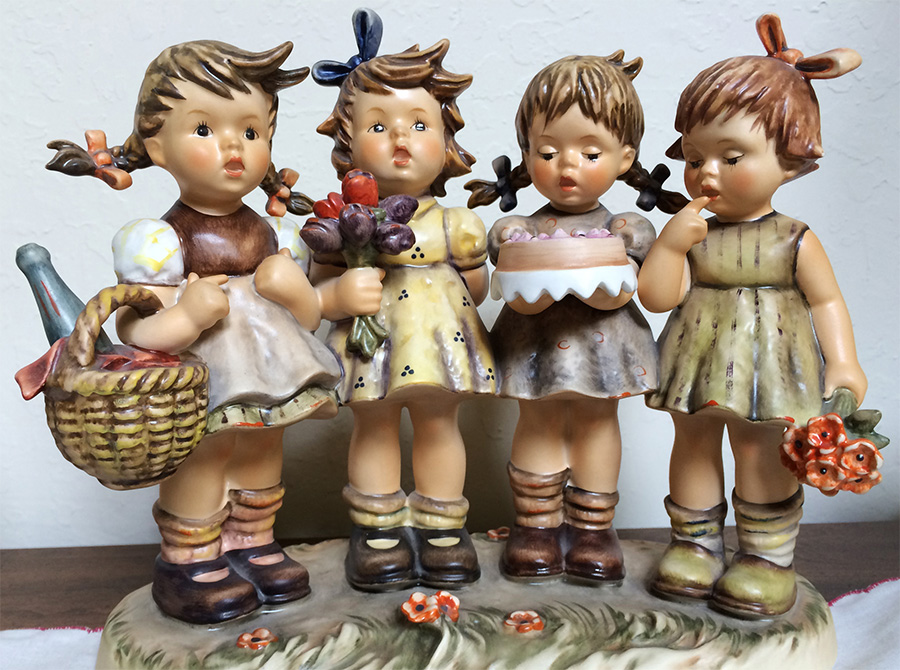
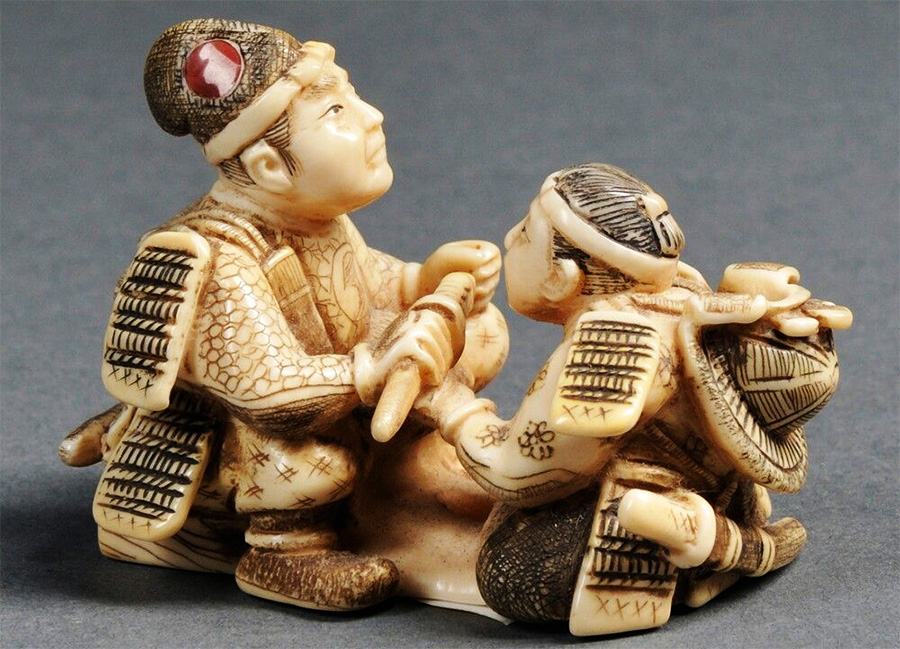
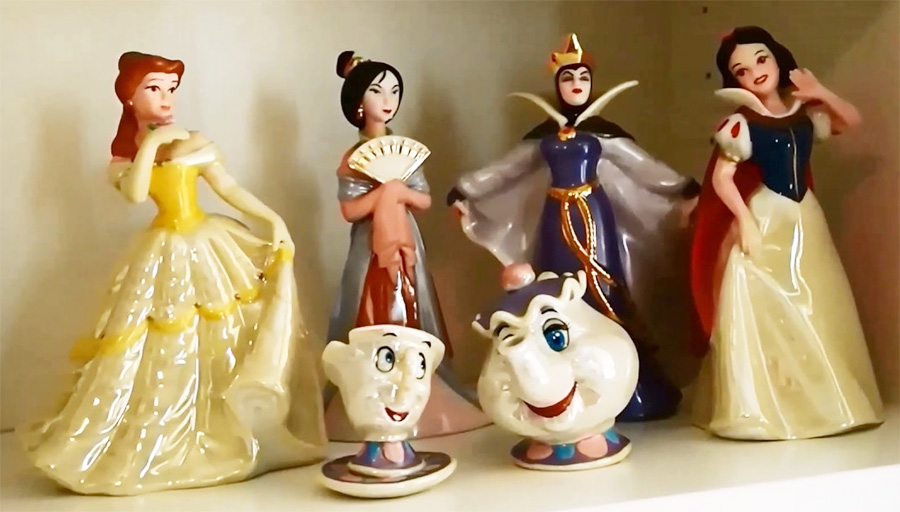
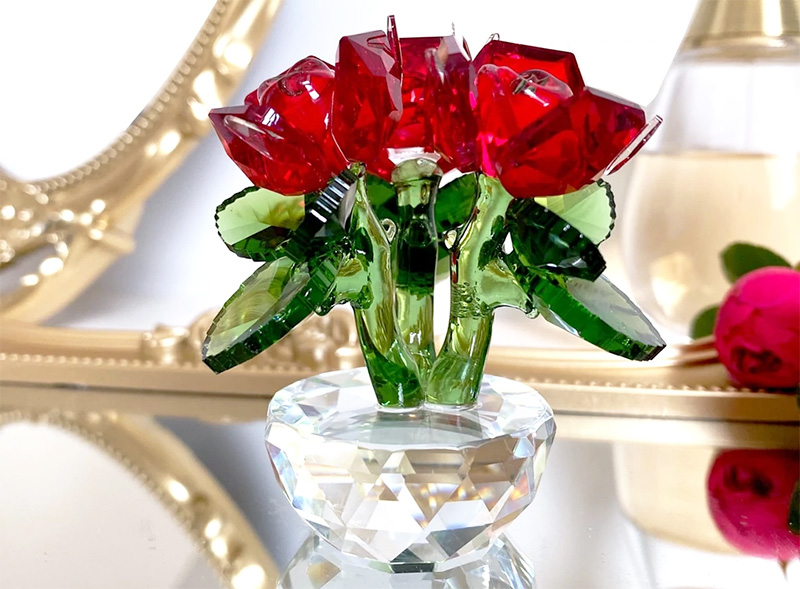
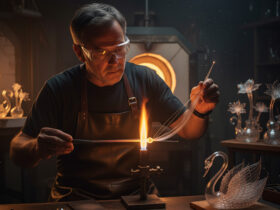
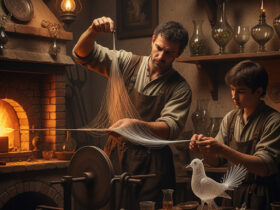
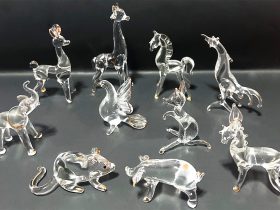
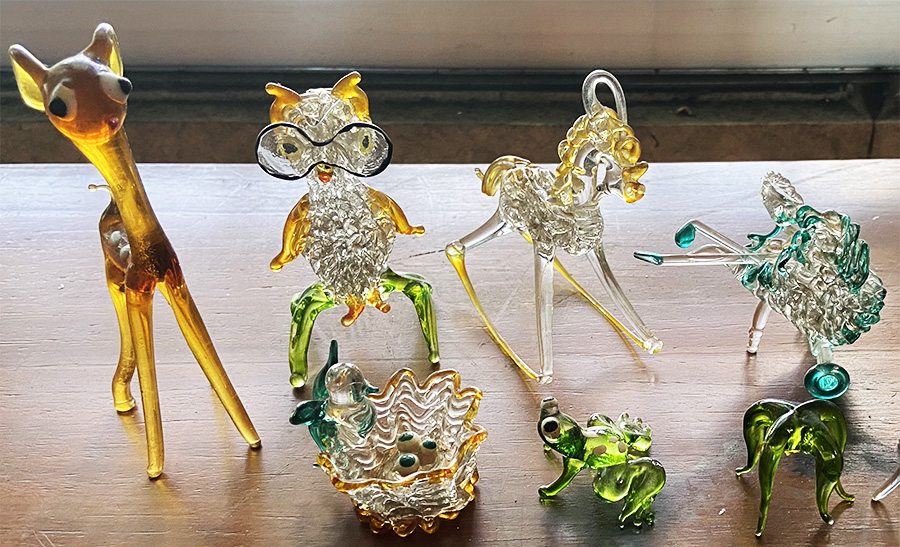
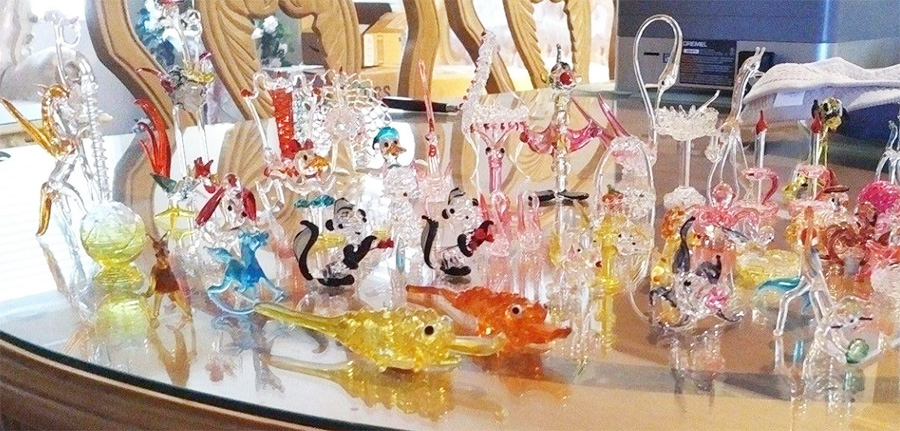
Leave a Reply